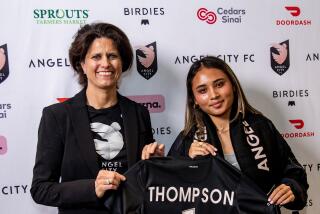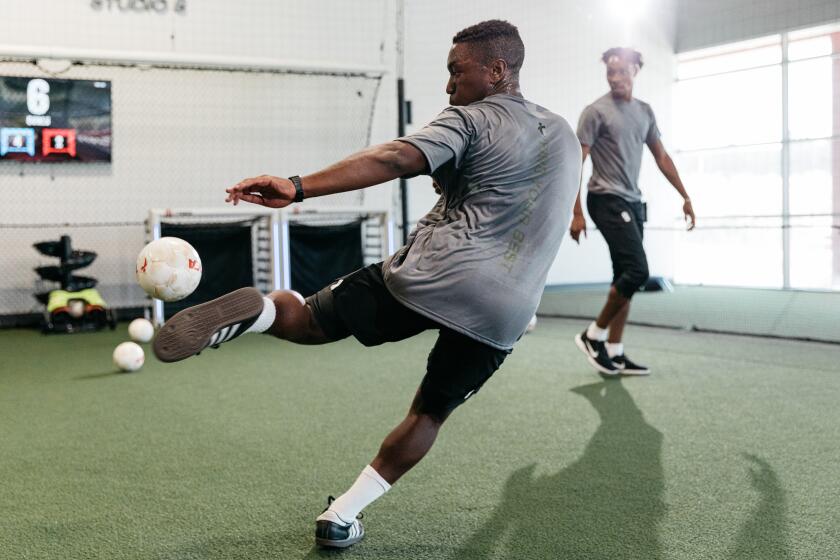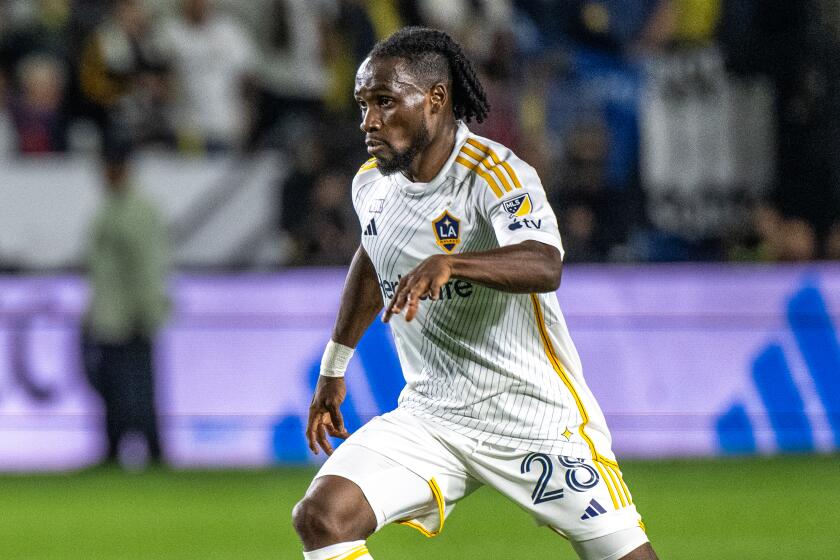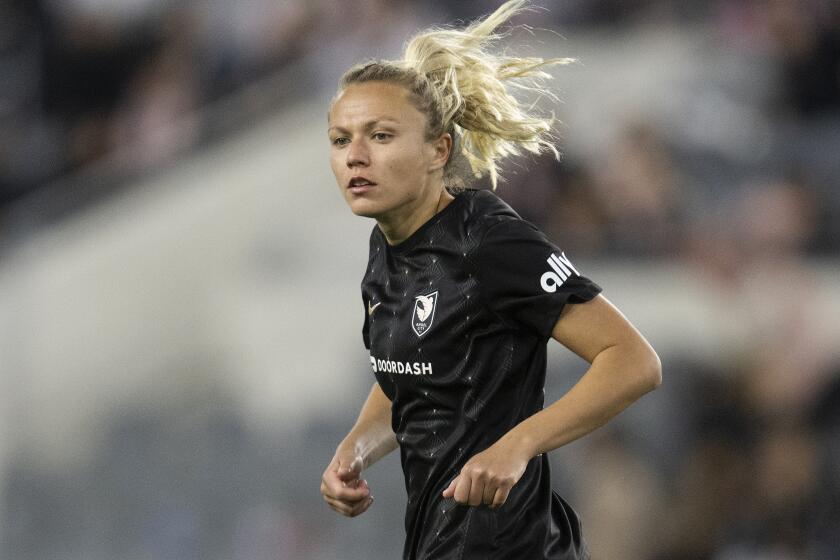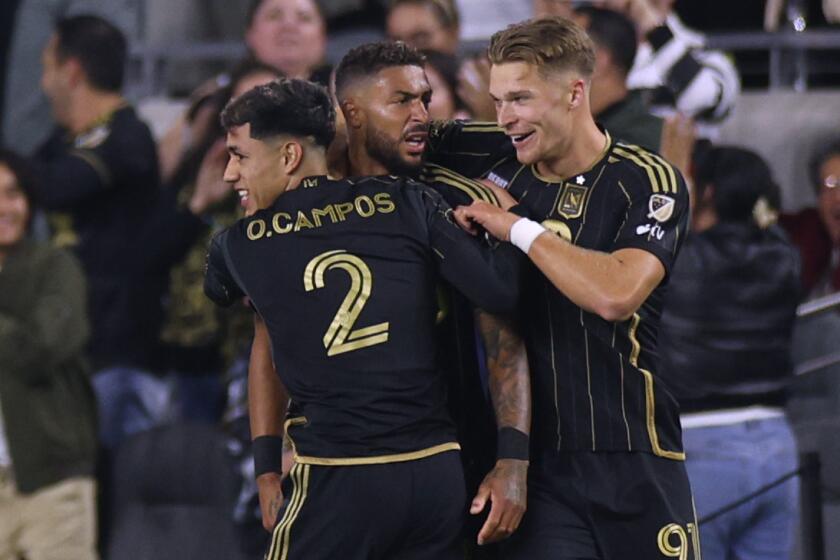Column: Diversity, talent on the rise in U.S. women’s soccer
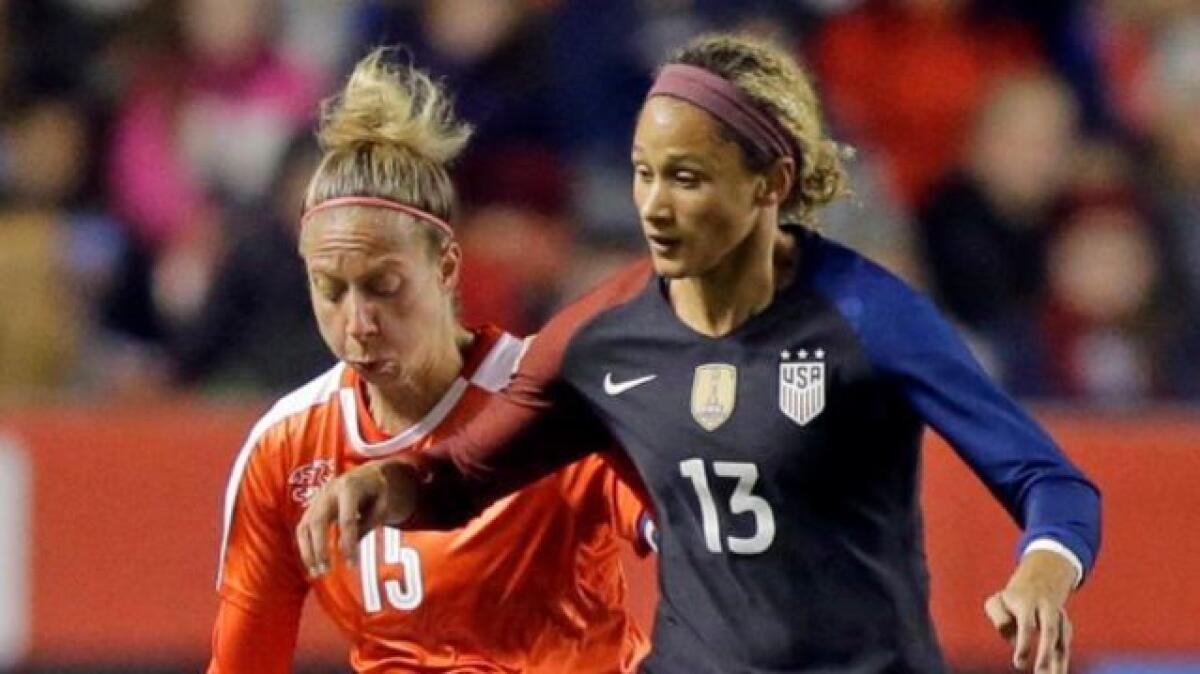
Growing up in a bedroom community across the East River from Manhattan, Crystal Dunn was often the only African American on her school and club soccer teams.
Casey Short, who was raised two years and 800 miles away in suburban Chicago, had the same experience. So did Lynn Williams, who is from Fresno, where she both played soccer and watched it on television.
“Growing you, you didn’t really see a lot of women of color on TV,” said Williams, who analyzed the evidence and concluded early she didn’t have a future in the sport. “As a little girl you look at the TV screen and you usually go towards things [where] you see people that look like you.”
Little girls watching women’s soccer on TV today are likely to have a completely different experience. In the last couple of years African American participation in the sport has gone from isolated to indispensable, and that’s bringing positive change to a game that has long lacked diversity.
Five of the first 10 players selected in the NWSL draft earlier this month are African American, a record total. Nine of the 22 women who started in last women’s College Cup final between USC and West Virginia are black. That’s another record.
And when the Trojans won, Keidane McAlpine became just the second African American coach to win an NCAA women’s soccer title.
But perhaps the most striking break from the past was the roster national team that Coach Jill Ellis summoned to the StubHub Center this month for a 10-day winter training camp. Eleven of the 35 players called up — including Dunn, Short and Williams, who greatly misjudged her future in the sport — are African American.
That, too, would be a record — if records on such things were kept. By way of comparison, Ellis started just two African Americans (Christen Press and Sydney Leroux) in the 2015 World Cup and three (Press, Dunn and Mallory Pugh) in last summer’s Olympics.
The transformation, the coach said, is an important one for reasons that stretch far beyond the playing field.
“The more representative any environment — a team, a business, a school — can be of our populace, the more genuine that environment becomes,” Ellis said. “It is fantastic that soccer is continuing to increase its reach in our country. With that, the platforms that feed our senior team, our youth national teams and colleges, are more diverse than they have ever been.
“It’s then natural that our senior team be reflective of this positive growth.”
McAlpine said that growth is obvious on the college recruiting trail, which runs through the nation’s high schools and youth leagues.
“We are starting to see more and more women of color that are able to play the game and play the game very well,” he said. “And I say women of color to broaden it. Latinas, black women, Asian — you’re starting to see a great cross-section of women of color.
“Our game, being the world’s game, is far more open to people of color because it’s not a game that originated in the [United] States.”
The men’s national team has long reflected that. Nine of the 32 players new Coach Bruce Arena called into his training camp this month are black, as were eight of the 23 players former coach Jurgen Klinsmann took to the last World Cup.
On the women’s side, however, the game has long been seen as a primarily white, suburban sport.
“I think about when I was growing up, who I looked up to. The [national] team was pretty much all white,” Short said.
And though she said she never saw color — “I saw it like, ‘I want to do that. I want to be like them’ ” — Short understands she and the other African Americans on the national team and in the NWSL have become trailblazers and role models for young girls who may want to follow them.
“It’s awesome that there’s more and that little girls can look on the TV and say, ‘Hey, she looks like me.’ Or , ‘She has crazy hair like me,’ ” said Short, who is in her third national team camp. “If she can do it, if she can play at the highest level, then I have a chance as well.”
Some of the new generation of players have offered more than just an example, though. They’ve offered excellence as well.
Dunn and Williams, who played her college soccer at Pepperdine, are both former NWSL scoring champions and MVPs. Pugh, still just 18, became the youngest American to score a goal in the Olympic Games when she tallied against Colombia last August. And Press, who grew up in the South Bay, won the Hermann Trophy — soccer’s equivalent of the Heisman — at Stanford, where she set six school records.
And as the pool of women’s soccer talent in the U.S. expands and diversifies, that bar will only be pushed higher.
“There are better players that are being picked and showcased because they are actually now in the game,” McAlpine said. “For a long time we weren’t. And we’re now reaping the benefits of that.
“The College Cup was another great showcase of that when you look at the diversity in the two teams. It was a great cross-section of the U.S. There were all kinds of races in that game.
“The best we will ever be is when we can tap into all of our potential talent in this country. And our diversity only helps us.”
Twitter: @kbaxter11

